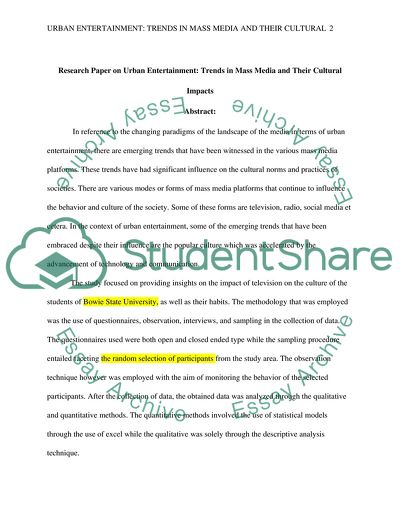Cite this document
(Urban Entertainment: Trends in Mass Media Research Paper Example | Topics and Well Written Essays - 4000 words, n.d.)
Urban Entertainment: Trends in Mass Media Research Paper Example | Topics and Well Written Essays - 4000 words. https://studentshare.org/media/1874256-research-paper-on-urban-entertainment-trends-in-mass-media-and-their-cultural-impacts
Urban Entertainment: Trends in Mass Media Research Paper Example | Topics and Well Written Essays - 4000 words. https://studentshare.org/media/1874256-research-paper-on-urban-entertainment-trends-in-mass-media-and-their-cultural-impacts
(Urban Entertainment: Trends in Mass Media Research Paper Example | Topics and Well Written Essays - 4000 Words)
Urban Entertainment: Trends in Mass Media Research Paper Example | Topics and Well Written Essays - 4000 Words. https://studentshare.org/media/1874256-research-paper-on-urban-entertainment-trends-in-mass-media-and-their-cultural-impacts.
Urban Entertainment: Trends in Mass Media Research Paper Example | Topics and Well Written Essays - 4000 Words. https://studentshare.org/media/1874256-research-paper-on-urban-entertainment-trends-in-mass-media-and-their-cultural-impacts.
“Urban Entertainment: Trends in Mass Media Research Paper Example | Topics and Well Written Essays - 4000 Words”. https://studentshare.org/media/1874256-research-paper-on-urban-entertainment-trends-in-mass-media-and-their-cultural-impacts.


